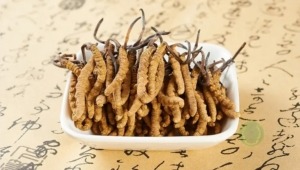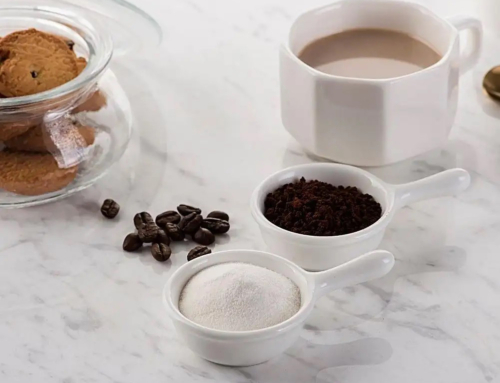A persistent hyperglycemic environment enhances the protein glycation reaction and increases advanced glycation end products (AGEs), which can stimulate the production of reactive oxygen species (ROS). Accumulated ROS induces oxidative stress and inflammation and activates various signaling pathways, such as mitogen-activated protein kinases (MAPKs) and nuclear factor-κB (NF-κB) pathway, which aggravate oxidative stress and inflammation. Besides, excessive ROS could attack the unsaturated fatty acids in the biofilm phospholipid bilayer, causing lipid peroxidation and insulin resistance and triggering multiple cascading reactions. The role of the signal mechanism in treating Diabetic Kidney Kidney (DKD) by C. sinensis will be discussed separately below.
1 Anti-Hyperglycemic Activity
The most important target for DKD treatment is to control hyperglycemia as early as possible. Long-term hyperglycemia is considered the main reason for abnormalities of tissue and microvascular. The role of C. sinensis in the treatment of DKD has been demonstrated. The Cordyceps preparation capsule had additional beneficial effects on the DKD patients treated with angiotensin receptor blockers (ARB) and facilitated the outcomes of patients. Several active constituents contribute to the anti-hyperglycemic activity. High fiber in the fruiting body of C. sinensis could improve glucose intake and insulin resistance of cells due to its influence on glucose absorption.
Moreover, polysaccharides are also the key active constituents in anti-hyperglycemia. The polysaccharides-enriched extract could lower glycemic levels by 60–70%. CS-F10, a polysaccharide derived from C. sinensis hot water extracts, significantly reduced glucose levels in normal and hyperglycemic mice by increasing glucokinase activity in livers.
 Besides, metabolic factors such as insulin levels and resistances may also be the central factors in DKD. Insulin resistance can act on the glomeruli by mediating metabolism and hemodynamics, resulting in intraglomerular hypertension and thus influencing the progression of DKD.
Besides, metabolic factors such as insulin levels and resistances may also be the central factors in DKD. Insulin resistance can act on the glomeruli by mediating metabolism and hemodynamics, resulting in intraglomerular hypertension and thus influencing the progression of DKD.
Moreover, insulin resistance can also lead to high salt sensitivity, which associates with albuminuria and impairment of renal function, increasing the risk of macrovascular dysfunction.
Therefore, boosting insulin sensibility is imperative. It was shown that both the fermentation mycelia and the fermentation liquid of C. sinensis could significantly improve glucose response in OGTT and increase the insulin level in nicotinamide and streptozotocin (STZ)-induced diabetic rats. Several studies demonstrated that polysaccharides in C. sinensis could significantly decrease blood glucose and increase insulin sensitivity in diabetic models. In the state of insulin resistance, the impairment of insulin signaling in mesangial cells (MCs) might cause hypertrophy, proliferation, and matrix deposition.
Normally, relying on the actin cytoskeleton of podocytes, the glucose transporter 4 (GLUT4)-rich vesicles can be translocated, which helps the insulin-induced glucose uptake. At the same time, the destruction of insulin signaling leads to damage to the actin cytoskeleton. The GLUT4 nuclear translocalization function is missing, eventually contributing to the loss of podocytes and the production of proteinuria. β-sitosterol, an effective anti-oxidant and anti-hyperlipidemia plant sterol in C. sinensis, was reported to lower lipid levels, restore insulin sensitivity, activating insulin receptors and GLUT4 in adipose tissue, and eventually exert anti-hyperglycemia activity in diabetic rats Cordycepin also plays a vital role in attenuating insulin resistance. It could improve insulin sensitivity by monitoring serum insulin levels and homeostasis model assessment of the insulin resistance index.
In addition, pathogenic oxygen free radicals caused by hyperglycemia play an important role in the pathogenesis of DKD. CSP-1, a polysaccharide separated from C. sinensis, had the effects of scavenging free radicals and exerted an anti-hyperglycemia influence via significantly decreasing the glucose level by inducing the release of insulin in the remainder pancreatic cells and reducing the insulin metabolism. The metabolic process of glucose involves various reactions and the participation of cytokines. As an important endocrine organ, adipose tissue is closely related to inflammation and insulin resistance by secreting various hormones, pro- and anti-inflammatory adipokines, which can affect glucose, lipid metabolism, and energy homeostasis.
Patients with T2DM have more visceral subcutaneous fat than normal individuals, hyperglycemia causes macrophages in adipose tissue to secrete pro-inflammatory factors and stimulates the accumulation of ectopic fat so that the secretion of pro- and anti-inflammatory adipocytokines is imbalanced. The increase of pro-inflammatory adipocytokines, such as leptin, can aggravate inflammation via stimulating the secretion of inflammatory factors (TNF-α, IL-6, IL-12), and the increase of resistin reduces the anti-inflammatory effect of adiponectin meantime inducing the aggravation of insulin resistance. Using C. sinensis could significantly improve insulin sensitivity and boost adiponectin expression within plasma and adipose tissue in STZ-induced diabetic mice. Thus, C. sinensis might become an effective adjuvant medicine in treating DKD of its anti-hyperglycemic function and improving insulin resistance.
2 Anti-Inflammatory Activity
Chronic low-grade inflammation, also known as meta-flammation, is a factor associated with the initiation and development of DKD. Metaflammation activates macrophages and then secretes cytokines such as TNF-α and IL-1β to regulate immunity. Afterward, the excessive activation of immune cells will also stimulate the inflammatory response. There is a causal relationship between inflammation and insulin resistance; pro-inflammatory cytokines have been shown to mediate insulin resistance. A meta-analysis suggested that C. sinensis combined with ACEI/ARB in patients with III to IV stage of DKD was effective in alleviating proteinuria, inflammation, and dyslipidemia by comparing 24-h proteinuria, urinary albumin excretion rate, microalbuminuria, serum creatinine, blood urea nitrogen, C-reactive protein, serum triglycerides, total cholesterol.
Recent DKD studies have focused more on inflammation; thus, studying the anti-inflammatory mechanisms of TCM has provided a new perspective on treatment progress. The extracellular polysaccharides (EPS) extracted from C. sinensis mycelial fermentation could suppress the inflammatory NF-κB pathway by inhibiting the expression of pro-inflammatory cytokines TNF-α and iNOS and improving the expression of the anti-inflammatory regulator IL-10 in LPS-induced mice models.
NADPH oxidase (NOX) plays a prominent role in inflammation and is one of the primary sources of ROS in biological systems. As one of the members of the NOX family, NOX4 is highly expressed in the kidney, and recently, NOX1 has also been found in the kidney. Exposure to hyperglycemia increases the expression of NOX4 in mouse proximal renal tubular cells; using NOX1/4 inhibitors (GKT136901) or NOX4 siRNA could block the damage of hyperglycemia to the kidney and reduce the production of proteinuria. Cordycepin could reverse the albumin-induced epithelial-to-mesenchymal transition (EMT) in HK-2 cells by decreasing the expression of Rac1, NOX4, p22phox, p47phox and inhibiting the formation of ROS to alleviate inflammation and oxidative stress. TNF and TNF receptor-1 (TNFR1) participate in the recruitment of NOX1, which is involved in inflammation, cell proliferation, and immune defense, the binding of TNF homotrimer to TNF-R1 initiates the binding of the adaptor protein, then recruits other effector proteins to form the TNF-R1 signaling complex, leading to the activation of multiple pathways, and then producing ROS to initiate inflammation.
Based on a network pharmacological study, TNF is the crucial target in treating DKD by C. sinensis. And CPS-F, which was extracted from C. sinensis, could reduce the expression of pro-inflammatory cytokines and the production of ROS in human MCs by relying on TNF-R1 and inhibiting the activity of NOX1 from exerting anti-inflammatory activity.
In recent years, it has been demonstrated that the activation of purinergic 2X7 receptor (P2X7R) and nucleotide-binding oligomerization domain-like receptor protein 3 (NLRP3) inflammasome in podocytes are associated with the pathogenesis of DKD. Robert et al. identified that P2X7R was highly expressed in renal biopsy specimens from patients with DKD, and the expression rate of glomerular P2X7R was about 50%. The activation of P2X7R on M1 polarized pro-inflammatory macrophages, inducing the assembly of the NLRP3 inflammasome and resulting in the release of pro-inflammatory factors and generation of inflammation.
Therefore, antagonizing P2X7R may become a new type of anti-inflammatory therapy. Extensive evidence on C. sinensis involved improving DKD via inhibiting P2X7R/NLRP3 inflammasome axis activation. It could down-regulate the expression of P2X7R and NLRP3 inflammasome (including NLRP3, ASC, and caspase-1) in vivo and in vitro experiments, and the expression of downstream factors IL-1β and IL-18 was also significantly decreased, C. sinensis exerted an anti-inflammatory effect by antagonizing the P2X7R/NLRP3 inflammasome axis to relieve podocytes damage in DKD. C. sinensis can alleviate inflammation in various ways to delay the progression of DKD, and its active constituents are vital to the anti-inflammatory agents in the pipeline.
3 Immunomodulatory Activity on Macrophages
C. sinensis regulates immunomodulatory activity to improve DKD may be primarily concentrated on its polysaccharides and nucleoside components. The immunomodulatory effect of natural plant polysaccharides has been recognized. The activation of macrophages is an important event in immune response, and the infiltration of macrophages is related to the progression of DKD to ESRF. Plant polysaccharides can regulate the balance of pro- and anti-inflammatory cytokines secreted by macrophages to normalize immunity. Polysaccharides activate macrophages by binding to specific receptors on the surface of macrophages, then initiating a series of intracellular signaling cascade reactions. They exert immunomodulatory effects by regulating the production of ROS, secretion of cytokines and chemokines, cell proliferation, and phagocytic activity of macrophages.
Activated macrophages can be polarized into classically activated M1 and alternatingly activated M2 forms, where M2 cells have anti-inflammatory activity, abrogate the Th1 response, promote the Th2 response, release inflammatory substances, and promote epithelial and vascular repair. C. sinensis could promote macrophages to polarize towards an M2 phenotype to inhibit the inflammatory response and regulate the production of cytokines in RAW264.7 cells through the MAPK and PI3K/Akt signaling pathways, exerting immunomodulatory activity on macrophages. The balance of pro- and anti-inflammatory activities exerted by M1/M2 macrophages plays a pivotal role in regulating the immune system. Cordycepin and adenosine could alter the phenotypic conversion of macrophages by reducing the expression of pro-inflammatory factors and chemokines, such as IL-1β, IL-6, TNF-α, RANTES, and CX3CL1, and increasing the expression of anti-inflammatory cytokines, such as IL-1ra, IL-10, TGF-β.
By the way, the polarization of M2 macrophages can induce EMT and fibrosis, and M2 macrophages can promote the secretion of TGF-β, which is generally recognized as the typical pro-fibrosis factor and an anti-inflammatory factor. C. sinensis up-regulated the mRNA levels of the anti-inflammatory mediator (IL-10). They suppressed the mRNA levels of the pro-inflammatory mediator (IL-1β) and the NO production in LPS-induced RAW264.7 cells, regulating pro- and anti-inflammatory mediators to balance M1/M2 macrophages and avoiding excessive polarization of macrophages to exert an immunomodulatory effect. It was demonstrated that Cordycepin could inhibit the expression of TNF-α, IL-6, IL-1β, and mediate the immune responses in macrophages, decrease the expression of diabetes regulating genes (11β-HSD1, PPARγ) in activated macrophages, finally play the immunomodulatory effect.
In summary, C. sinensis is closely linked to anti-inflammatory activity in regulating the immunity of macrophages. The C. sinensis preparations and their extracts are expected to become potential therapeutic agents for regulating inflammatory and metabolic diseases.
Under the guidance of TCM theory, as a tonic, C. sinensis may also have a certain relationship with its regulation of T cells. The balance between effector T cells and regulatory T cells plays a regulatory role in the pathogenesis of DKD. The polysaccharides extracted from the fermented mycelium of C. sinensis could increase the weight of the thymus gland in diabetic rats and enhance immunity. One study reported that C. sinensis could regulate the CD4+CD25+FoxP3+ regulatory T (T reg) cells and Th17 cells in spleen and pancreatic lymph nodes of non-obese diabetic mice, thereby inhibiting DM. However, the regulation effect of C. sinensis on the balance of T cells in DKD is less, and further researches remain to be studied.
4 Anti-Oxidant Activity
Due to long-term exposure to a high glucose environment produces excessive amounts of superoxide, NO, and other reactive oxygen substances in cells, decreasing endogenous and exogenous anti-oxidants, which cannot interact with ROS to counteract oxidative damage to cells. The overproduction of ROS contributes to microvascular damage and combines with oxidative stress, inducing cellular apoptosis in DKD.
Hence, it is crucial to reduce the production of ROS by using anti-oxidant agents. It has been reported that C. sinensis has an anti-oxidant effect. C. sinensis could exert a powerful anti-oxidant effect to significantly reduce the pancreatic malondialdehyde levels and increase the serum anti-oxidant property in vitro and in vivo experiments. And the anti-oxidant effect of C. sinensis might be due to inhibiting the production of ROS via the interference of C. sinensis extracts in ERK and Akt pathways.
ROS can induce the influence of unsaturated fatty acids and then induce lipid peroxidation, decreasing the fluidity of podocyte membranes, eventually damaging the structures and functions of the cell membranes. The extracts of C. sinensis could attenuate lipid peroxidation and scavenge free radicals, while the enriched fraction of polysaccharides had even stronger anti-oxidant activity.
A current study indicated that the anti-oxidant activity of C. sinensis was achieved by melanin; it could scavenge DPPH and the chelating ability on ferrous ions. A study found that the phenols and flavonoids contained in the Indian Himalayan isolate of C. sinensis (AECS) may be the main components of exerting anti-oxidant activity; AECS could significantly inhibit the release of TNF-α and IL-1β and suppress the production of NO in LPS-induced THP1 cells.
Moreover, the rich unsaturated fatty acids in low-density lipoprotein (LDL) are susceptible to oxidative degeneration under cyclic oxidative conditions, and C. sinensis could reduce the occurrence of cardiovascular events in DKD by protecting the oxidation of LDL.
Evidence demonstrated that excessive albumin could activate NOX via Rac1, thus stimulating the production of ROS, and overproduction of ROS and NOX maybe take part in EMT induced by albumin. Cordycepin could suppress oxidative stress damage and protect HK-2 cells by significantly inhibiting the expression of NADPH system constituent proteins, ROS production, and NOX activity. C. sinensis can scavenge free radicals and relieves the hyperactive oxidative systems in oxidative stress to protect the impaired kidney.


Leave A Comment